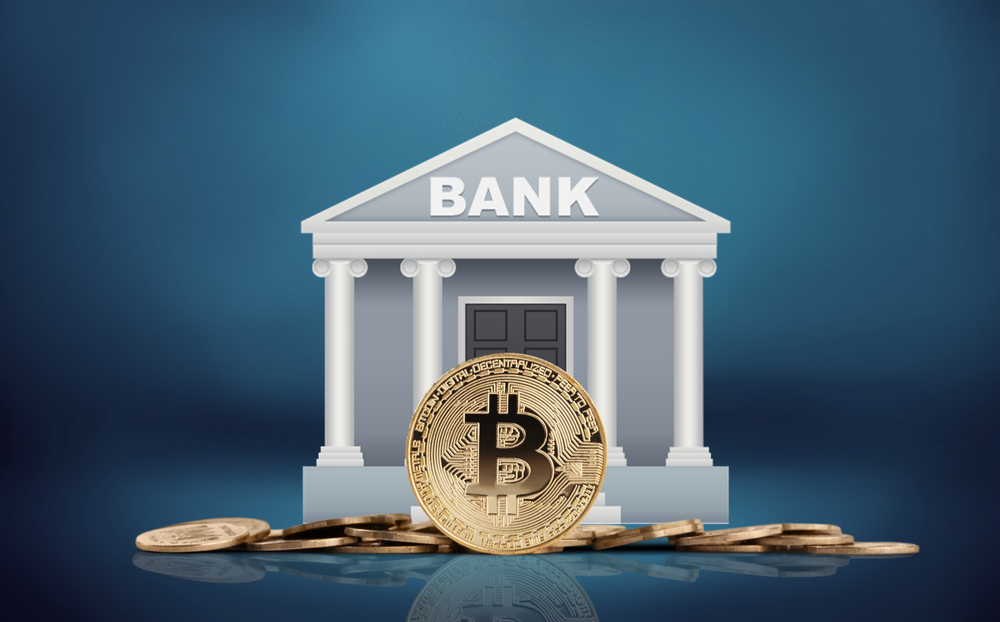The Rising Institutional Adoption of Cryptocurrencies

Cryptocurrency isn’t just a buzzword tossed around in tech circles anymore—it’s rapidly carving out a significant niche within the vaulted walls of financial institutions that once viewed digital currencies with skepticism. The reasons for this pivot are rooted deep within the frustrations plaguing traditional banking: sluggish transaction speeds, cumbersome paperwork, and opaque processes that leave much to be desired. In contrast, crypto wields its technological prowess offering swift transfers, transparency, and a borderless reach that speaks directly to our modern desire for immediacy and clarity. Seeing these clear upsides, the old guard of finance is increasingly gravitating towards the efficiency and potential profits that cryptocurrencies promise. As we peel back the layers, what unfolds is a narrative of a financial sector on the precipice of significant change—ushered in by the adoption of crypto and its promise to redefine our experiences with money and investments. Join me in exploring this thrilling evolution where traditional meets digital, and the fiscal landscape as we know it could be forever changed.
Bottlenecks in Traditional Financial Systems

Traditional financial systems can often resemble a relic of a bygone era. Customers and businesses alike grapple with:
- Lengthy transaction times that stall the flow of business and commerce.
- Layers of complicated paperwork that can turn financial transactions into logistical nightmares.
- A lack of transparency that can leave customers feeling out of the loop and unsure of the security of their assets.
In a world where instant gratification is the norm, these archaic processes are increasingly intolerable. This growing frustration represents a clear opportunity for disruption.
The Crypto Solution
Cryptocurrencies have emerged as the avant-garde pioneer leading the financial revolution with promises of:
- Speedy transactions, often settling in minutes, putting the snail-paced bank transfers to shame.
- An unparalleled level of accountability and traceability through blockchain technology.
- Global accessibility, breaking down financial borders and enabling truly international trade.
- The possibility of substantial financial gains, an enticing prospect for investors and institutions looking to diversify their portfolios.
The allure of these benefits is not merely theoretical—it’s backed by solid technological advancements and a vision for a more efficient future in finance. This juxtaposition of potential with the blemishes of conventional banking creates a potent attraction for the crypto alternative.
Setting the Context
Let’s consider the raw data: reports are showing a substantial climb in global crypto ownership. What’s behind these numbers? Is it pure speculation or is there a concrete shift in trust towards cryptocurrencies?
Recent surveys and studies show that financial institutions are beginning to cast their lot with digital assets. This is not just a fluke; it’s a trend supported by the clear advantages that crypto offers over traditional banking methods. It’s not just about being modern—it’s about being efficient, secure, and adaptable in a financial landscape that is increasingly global and digitized.
Are you curious about how this burgeoning interest in crypto by traditional financial institutions is reshaping the world of money and investments? Stay tuned, because what comes next will delve deeper into the emergence of cryptocurrency and how it’s rapidly gaining ground as the potential new standard for financial transactions.
Understanding Cryptocurrency Emergence and Its Rising Influence

Often referred to as ‘digital gold’, cryptocurrency was birthed from the desire for secure, anonymous transactions. But it didn’t just stop there — it has since skyrocketed, reshaping the financial stratosphere as we knew it. Where once these digital assets were the talk of niche online forums, today, they stand at the vanguard of a financial revolution.
Factors Driving the Crypto Surge
Curious about what’s propelling Bitcoin to new heights? Look no further. Let’s tackle the driving forces one by one:
- Supply Halving: This deflationary event cuts the reward for mining Bitcoin in half, effectively slowing down the new supply and potentially inflating prices.
- Positive Investor Sentiment: Enthusiasm and confidence are soaring as more businesses and consumers hop on the crypto train, eager not to miss out on its potential.
Crypto in the Real World – El Salvador’s Adoption
Consider El Salvador: a living, breathing laboratory for Bitcoin’s assimilation into a national economy. The bold move to legitimize the digital currency as legal tender is not just a footnote in history but a page-turner in the narrative of crypto’s real-world application and acceptance. This daring experiment is writing chapters on everything from financial inclusion to international remittances. But what ripple effects might this have on the larger global stage?
“When a country dares to bank on Bitcoin, it doesn’t just alter the financial landscape; it sends a shockwave of validation through the world of crypto.” — A Fintech Innovator
What remains to be seen is how this will evolve. Could other nations follow suit? How might this affect international economies and the global market? Fascinating questions, indeed. And we’re just getting warmed up.
The strings that control the world’s money are starting to untangle, thanks to the evolution of blockchain technology. But what does this mean for the behemoths of finance – the banks and investment funds we’ve relied upon for so long? Stay tuned as we peel back the curtain on institutional adoption in the next segment, questioning whether these traditional giants are ready to dance to the rhythm of the crypto drumbeat.
The Journey Towards Institutional Adoption of Cryptocurrencies

With each passing day, the evidence becomes clearer that cryptocurrencies are not just a flash in the pan. They are gaining a stronghold where it truly matters – within the bastions of established finance. The question on everybody’s mind is, what does this shift towards digital currency mean for the future of money as we know it?
Unraveling the Meaning of Institutional Crypto Adoption
When we speak of institutional crypto adoption, it’s important to clarify exactly what’s happening. This isn’t just about a few fintech startups dabbling in Bitcoin or Ethereum. It’s about the world’s leading financial institutions – think of the Wall Streets and the City of Londons – turning their attention, and more importantly, their dollars, towards cryptocurrencies.
For a second, let’s step back and consider the gravity of this shift. These institutions, once dismissive of crypto as mere speculation, are now building infrastructures to support it. It’s a move that speaks volumes about the growing trust in crypto’s underpinning technology and its potential as a financial instrument. Giants like JPMorgan Chase have even introduced their own digital coins!
A Look at the Statistics
One can’t argue with numbers, and the statistics of 2023 paint a vivid picture of crypto’s encroachment into the institutional realm. Reports have shown a staggering increase in blockchain wallets and institutional investments, indicating that these financial titans are not merely flirting with crypto; they’re in it for the long haul.
A closer inspection of these trends reveals astonishing snapshots:
- Investment banks are bolstering their trading teams to include cryptocurrency experts.
- Pension funds and endowments are quietly amassing crypto assets, diversifying portfolios like never before.
- Crypto exchanges are partnering with traditional banks to offer seamless fiat to crypto transactions.
This is more than mere acceptance; it’s a strategic pivot – a reorientation of focus towards a new horizon in finance. As someone once said, “When the winds of change blow, some people build walls, others build windmills.” And right now, these financial institutions are choosing to set their sails to the wind of digital currencies.
“Change is the law of life. And those who look only to the past or present are certain to miss the future.” – John F. Kennedy
As crypto makes its indelible mark on the financial sector, we can’t help but wonder: How will these developments redefine the way we envision economic growth and fiscal policy? Will the allure of decentralization and the promise of less red tape attract more than just the big players?
Stay with me as we take an even deeper dive into the profound impact this monetary metamorphosis is having on the structure and operations of financial institutions and beyond. But before that, pause for a moment and ponder on this: As cryptocurrency continues to integrate into the traditional financial system, what might be the challenges and opportunities institutions will face in this ever-evolving landscape?
Coming up next, we will inspect the ripple effects crypto is generating in the financial world, and I’ll share insights into the ways traditional banking is being disrupted by this digital revolution. The journey is far from over, and the promises and perils of this exciting realm continue to unfold before us.
Impact of Crypto Adoption on Financial Institutions

The financial world is experiencing a monumental shift, a sort of renaissance if you will, with cryptocurrency emerging as a leading protagonist. But what does this mean for the traditional bastions of finance? Let’s peel back the layers to truly understand the evolution happening right before our eyes.
Disruption in Traditional Banking
There’s no denying it – the crypto wave is forcing old institutions to ride new tides. With the blockchain’s innate promise of decentralization, immediacy, and security, financial institutions are finding themselves at a crossroads: adapt or face obsolescence.
- Cryptocurrencies are streamlining international transfers, rendering the agonizing wait times of yesteryear obsolete.
- The transparency of blockchain technology is ushering in a new era of trust and accountability in financial transactions.
- Smart contracts are eliminating the need for cumbersome third-party verification processes.
Consider the real-world example of Spanish banking giant BBVA. They’ve boldly stepped onto the crypto stage, offering Bitcoin trading and custody services as of June 2021. This move not only caters to their clientele’s evolving needs but also signals a willingness to embrace disruption over traditional rigidity.
The Pull of Potential Returns
Let’s talk about the elephant in the room – the staggering potential for returns. Bitcoin’s meteoric climb from a mere fraction of a penny to tens of thousands underscores the kind of wealth generation we’re discussing. It’s the modern-day gold rush, and financial institutions are keen not to be left in the dust.
“It’s not just about the money. It’s about the future of money itself.” – an anonymous crypto enthusiast
When JPMorgan Chase, a titan of Wall Street, starts to offer a Bitcoin Fund to its wealthier clients, you know there’s a seismic shift afoot. They’re not just after quick gains; they’re strategically positioning themselves in the crypto economy. With reports of Goldman Sachs following suit, one must ask: What long-term impacts will these moves have on the very foundation of traditional banking?
As we continue to traverse this financial revolution, we are left wondering, “What will tomorrow’s financial landscape look like?” Are we on the brink of witnessing decentralized finance taking its rightful place at the core of economic systems? Stay tuned and join us as we delve deeper into this enthralling subject and explore what the future holds in our upcoming segment.
Future Horizons: Predicting Crypto’s Role in the Financial Sector

The surge in cryptocurrency adoption paints a bright picture of a landscape where digital currencies are an integral part of our financial fabric. It’s not just about a trend that’s catching on—it’s about a revolution that’s reshaping the way we think about money, investment, and economic freedom.
Predicting the Future
When reports like those from LinkedIn hint that the ascent of institutional cryptocurrency adoption is set to maintain its momentum till 2024 and beyond, it begs the question—what does this mean for the future of finance? Are we moving towards an era where crypto isn’t just an option, but a necessity?
Consider this: Cryptocurrency is no longer the domain of just individual enthusiasts and early adopters. We’re talking about a paradigm shift where titans of industry are beginning to weigh in, with the blockchain ledger as their scale. Their involvement speaks volumes about the trust and legitimacy being conferred upon digital currencies.
Major Players Leading the Way
Visibility is crucial, and when heavyweight financial institutions and corporations start leveraging cryptocurrencies, others take notice:
- JPMorgan Chase & Co. created the JPM Coin and extended banking services to crypto businesses, indicating a strong belief in the digital currency model.
- PayPal enabled cryptocurrency as a funding source for purchases on its vast network, broadening crypto utility for its millions of users.
- Visa has been working to bridge the gap between cryptocurrencies and its global network of merchants and financial institutions, further solidifying crypto’s position in everyday transactions.
Each step taken by these giants not only propels the adoption curve upward but also paves the way for a wave of new players looking to carve out their niche in the crypto space.
“The future of finance is not something we enter, it is something we create.” – Unknown
And indeed, as we stand on the crest of this monumental wave, we’re not just participants but creators of this new financial dawn. Knowing where we’re headed is as crucial as understanding where we are now. Adapting to the winds of change can make the difference between riding the wave of prosperity or being left behind.
But what could this mean for you, the investor, the saver, the entrepreneur? What implications does this horizon hold for the hardworking individual eyeing the crypto marketplace with a mix of curiosity and caution?
Stay tuned as we continue to unfold the larger narrative of cryptocurrency’s burgeoning role in our global economy and dissect the true impact of this digital currency revolution. Could crypto be the stabilizing force we’ve been waiting for? Keep reading as we explore the magnitude of this financial tidal wave.
Bringing Everything Together: Understanding the True Impact of Crypto Adoption

As we’ve seen the ripple effects crypto acceptance has caused, it’s clear that the financial world as we know it is undergoing a monumental shift. The term “ripple effects” isn’t strong enough—it’s more akin to a financial tsunami, rewriting the rules of economic engagement.
Economic Impact
By now, it’s evident that cryptocurrencies are much more than a passing fad; they’re a disruptive force impacting global economies. The beauty of this technology is not just in the promise of growth but in the potential for cryptocurrencies to serve as economic stabilizers. Take for example the case study referenced from Crypto.News, where diversification through crypto has offered some economies a buffer against inflationary pressures.
But the story doesn’t end with mere market speculation. Institutions diving into crypto can have far-reaching implications for monetary policy. Decentralized currencies threaten to diminish the authority of traditional financial surveillance, granting both institutions and individuals heightened financial sovereignty—a concept backed by the tides of change detailed at LinkedIn.
Socio-Cultural Impact
It’s not all about ledgers and economics, though—crypto’s prevalence touches the very fabric of our society. It speaks to a cultural movement towards decentralization and distrust in traditional institutions. This phenomenon is not only intriguing but also transformative, sparking debates from local coffee shops to the halls of power regarding the authenticity and security of what we deem as ‘money’. And as the conversation spreads, so does the adoption, like a virus with no intention to stop. A look at Daily Trust illustrates the story of several major players who are not just joining in but leading the charge.
Imagine communities transacting freely without borders, small businesses flourishing without hefty transaction fees, and a world where financial inclusion isn’t just a goal but a reality. Cryptocurrency’s socio-cultural influence has the power to level playing fields and empower the underbanked, resonating with a growing global consciousness of equity and justice.
The conversation around cryptocurrency is saturated with tales of individuals making a fortune overnight, but it’s the silent, systemic alteration of our economic and cultural existence that’s truly gripping. This journey lets us question and redefine the very essence of value transfer. And now, as we teeter on the cusp of a financial evolution, one can’t help but ponder—what reflections will tomorrow bring about the choices we make today?
Stay tuned for our upcoming exploration, where we cement these notions with data and contemplations that may just redefine your perception of the digital currency revolution.
Wrapping up: A New Era of Financial Transactions

We’ve reached a remarkable juncture in our financial narrative – a point where the adoption of cryptocurrencies by institutions isn’t just a trend, but perhaps the dawn of a new era. The signs have been building, the momentum gaining, and now, we stand at a precipice of what might come to redefine the financial world as we know it.
Validate Claim
Let’s circle back to the data we’ve seen weaving through our discussions – the supportive figures that solidify the stature of cryptocurrencies today. From Wall Street to Silicon Valley, the numbers aren’t just trickling in; they are, in fact, flooding us with evidence of the crypto revolution’s steadfast progress. Think about it – if these numbers continue to spike, as they have done, we’re looking at an exponential surge in crypto integration in the very fabric of global finance.
Final Thoughts
So, what does this all mean for you and me? It’s time for a moment of reflection. The crypto revolution has brought to the fore compelling arguments that challenge traditional financial ideologies. Sure, it has been a roller coaster, with groundbreaking highs and heart-thumping lows. Yet, we’ve seen resilience in the face of this volatility, a testament to the potential of decentralized currencies.
Ah! But here’s a spoonful of food for thought. Cryptocurrencies have stepped beyond mere assets for investment and have started to shape new pathways in finance – think decentralized finance (DeFi), smart contracts, and more. These are not just ripples but waves that could very well turn into a tsunami reshaping coastlines across the financial ocean.
The Crypto Ride
Reflecting on the journey so far, crypto acceptance has been nothing short of a dramatic saga, filled with suspense, thrill, and a touch of the unknown. Those who caught the early waves have ridden a fantastic ride, one that continues to promise more surprises with each passing day. But, with institutions now firmly in the mix, that ride is perhaps about to get a lot more exciting.
Imagine a world where buying a home, securing a loan, or even daily shopping could all be tied to your digital wallet – no physical cash, just a secure and instant transfer of crypto coins. This is not a flight of fancy but a possible view on the horizon. As we anticipate the next chapters, one thing remains clear: the financial story is being rewritten, and cryptocurrencies are holding the pen.
It’s a thrilling time to be part of this journey, and I can’t wait to see where the path leads. Onwards and upwards, my friends, for the crypto ride is only just getting started.
